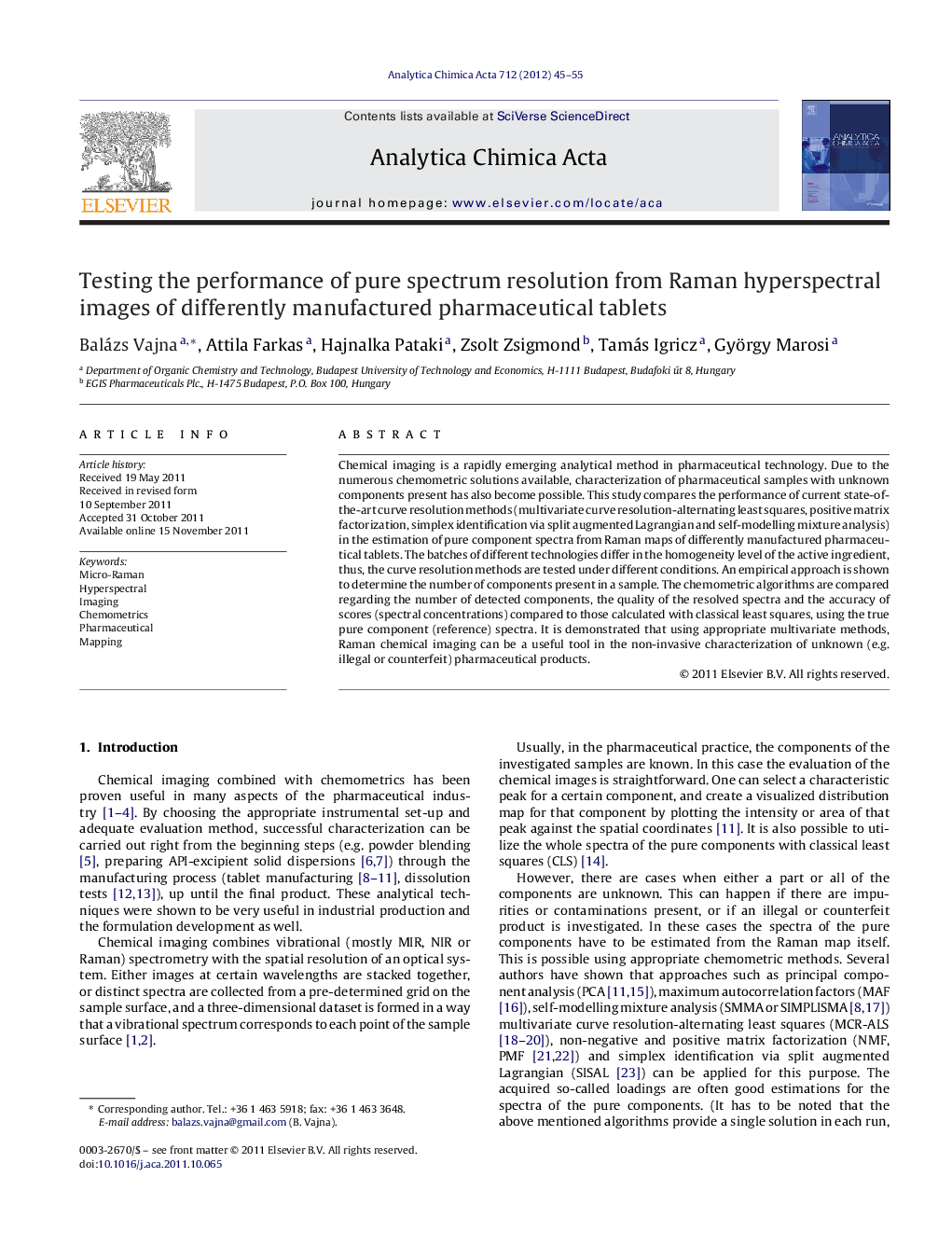| Article ID | Journal | Published Year | Pages | File Type |
|---|---|---|---|---|
| 1166467 | Analytica Chimica Acta | 2012 | 11 Pages |
Chemical imaging is a rapidly emerging analytical method in pharmaceutical technology. Due to the numerous chemometric solutions available, characterization of pharmaceutical samples with unknown components present has also become possible. This study compares the performance of current state-of-the-art curve resolution methods (multivariate curve resolution-alternating least squares, positive matrix factorization, simplex identification via split augmented Lagrangian and self-modelling mixture analysis) in the estimation of pure component spectra from Raman maps of differently manufactured pharmaceutical tablets. The batches of different technologies differ in the homogeneity level of the active ingredient, thus, the curve resolution methods are tested under different conditions. An empirical approach is shown to determine the number of components present in a sample. The chemometric algorithms are compared regarding the number of detected components, the quality of the resolved spectra and the accuracy of scores (spectral concentrations) compared to those calculated with classical least squares, using the true pure component (reference) spectra. It is demonstrated that using appropriate multivariate methods, Raman chemical imaging can be a useful tool in the non-invasive characterization of unknown (e.g. illegal or counterfeit) pharmaceutical products.
Graphical abstractFigure optionsDownload full-size imageDownload as PowerPoint slideHighlights► MCR-ALS and PMF provide better spectra and concentration maps than SMMA and SISAL. ► Homogeneous distribution of a component makes curve resolution much less accurate. ► MCR-ALS can be also well used if a component is homogeneously distributed. ► An unknown product can be characterized regardless how it was manufactured. ► Our results show perspectives in the analysis of unknown (illegal) drugs.
